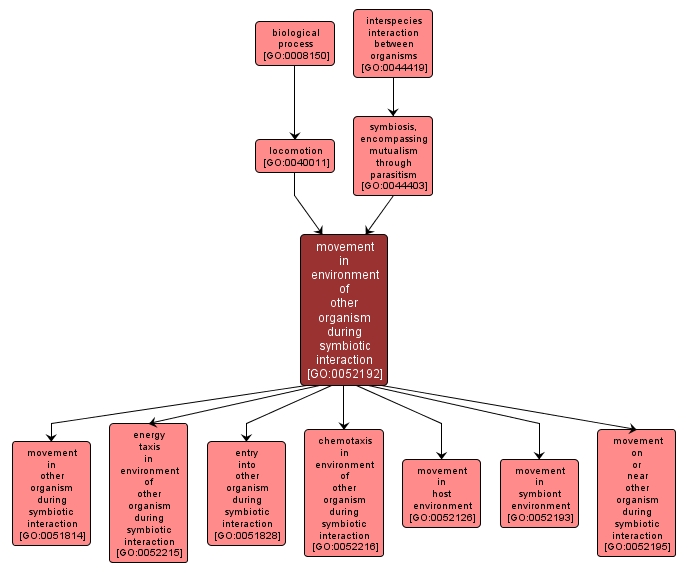GO TERM SUMMARY
|
| Name: |
movement in environment of other organism during symbiotic interaction |
| Acc: |
GO:0052192 |
| Aspect: |
Biological Process |
| Desc: |
The directed movement of an organism or motile cell on, within or near a second organism, where the two organisms are in a symbiotic interaction. |
Synonyms:
- locomotion in environment of other organism during symbiotic interaction
|
|

|
INTERACTIVE GO GRAPH
|














